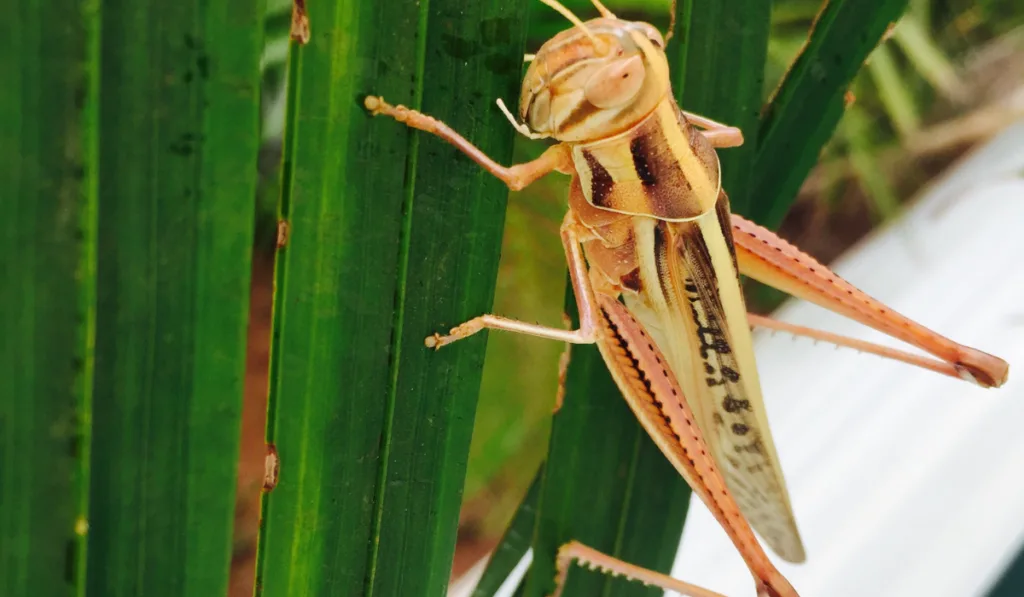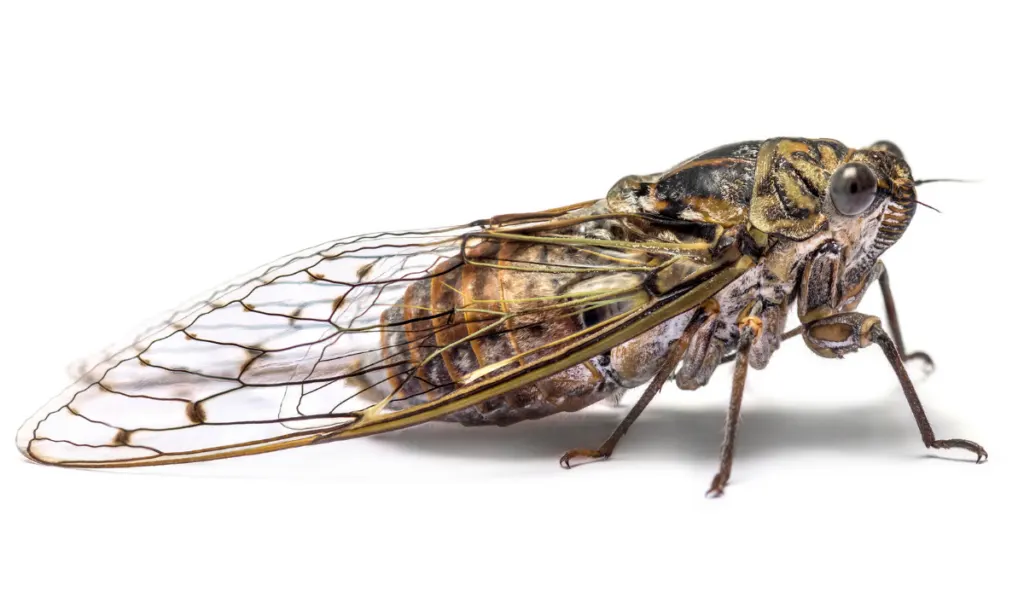You may have heard people refer to cicadas as locusts, or you may have even been referring to them as locusts yourself.
But you may be surprised to know that they are two completely different insects.
As revealed by the College of Agricultural Science at Pennsylvania State University, this confusion has been around for a while.
The early colonists came across periodical cicadas in their agricultural activities, a type of cicada only found in North America.
Since the colonists had not encountered periodical cicadas before, they did not know how to classify them.
But they had knowledge of the locust plagues in the Bible. They assumed that the periodical cicadas, which can appear in large numbers, were locusts.
Cicadas and locusts are very different. Perhaps the only similarities between them are their swarming behaviors and the fact that they are both insects.
So, what are the differences between cicadas and locusts?

Table of Contents
1. Different Binomial Classification
While both cicadas and locusts belong to the same class – Insecta – their orders differ. While cicadas belong to the Hemiptera order, locusts belong to the Orthoptera order.
The Hemiptera are also called true bugs.
Like other members of this order, cicadas undergo incomplete metamorphosis. They also have partially membranous and partially hardened wings.
The Orthoptera insects have long hind legs adapted for jumping. Like other members of this order, locusts have narrow forewings and hardened hind wings.
2. Swarming Threat
While locusts are a species of grasshopper, they differ from the typical grasshopper.
The swarming behavior and the size of locusts relative to regular grasshoppers are the main differences.
When locusts swarm, they are a threat to crops.
Locust swarms can destroy large areas of vegetation and cause huge amounts of damage.
In fact, the havoc they wreak sometimes leads to famine.
This swarming threat of locusts is their gregarious phase, and it is triggered by desperation for food.
Cicadas, on the other hand, do not swarm.
There are two types of cicadas: annual cicadas and periodical cicadas.
While periodical cicadas (cicadas that appear every thirteen to seventeen years) usually show up in large numbers, they are not swarms.
Large numbers of cicadas are more accurately referred to as a cloud or plague.
Even though cicadas are herbivorous, they are not quite as threatening to crops as locusts are.
They may damage cultivated vegetation, but this damage doesn’t compare to what locusts can do.

3. Reproduction
The reproduction process of cicadas is a bit more complex than that of locusts.
Following mating between adult cicadas, the females slit a twig with their ovipositors. Then they lay their eggs within the slit.
Cicadas undergo incomplete metamorphosis.
In other words, their eggs develop to become nymphs, then adults. But it does not quite happen as straightforward as this.
Within six to ten weeks, cicada nymphs hatch from the eggs. After hatching, they drop to the ground and bury themselves.
The time it takes for the nymphs to progress to adults depends on the variety of cicada.

Periodical cicadas take thirteen to seventeen years to mature into adults. While annual cicadas take around two to five years.
The process of reproduction in locusts is much more straightforward. However, like cicadas, they still undergo incomplete metamorphosis.
Locusts mate then lay their eggs in the soil. After ten to sixty-five days (depending on the temperatures), the eggs hatch to release nymphs.
Hatching typically occurs in spring, and after that, the nymphs undergo multiple molts before they become adults.
It takes them anywhere from twenty-four to ninety-five days to become adults.
Most varieties of cicadas live for two to five years. But the periodical cicadas live for thirteen to seventeen years.
Locusts, on the other hand, have a short average lifespan of three to six months.
4. Physical Appearance
Cicadas have wider yet shorter bodies than locusts. They also have wider eyes and forewings than locusts.
Locusts, on the other hand, have longer bodies, larger hind wings, and longer hind legs than cicadas.
While the periodical cicadas have black bodies, wing veins, and red eyes, the annual cicadas have clear wings with light-green bodies.
Locusts can either be green or brown with black patterns.
In their migratory phase, solitary locusts are usually green. But in their gregarious phase, they are typically brown with black colorings.
5. Diet
While both insects are herbivorous, their diets differ.
Cicadas have mouthparts adapted for sucking juices from plants. They usually feed on juice from twigs, roots, and branches.
Locusts, on the other hand, eat leaves and other soft plant tissues.
6. Calls
Another difference between these two groups of herbivorous insects is their calls.
Cicadas are louder than locusts. In fact, their calls are sometimes so loud that they can damage the human ears.
Cicadas make their sounds by contracting and relaxing their abdominal muscles.
The movement of their abdominal muscles causes their tymbals to shake and produce their calls. The tymbal is an organ in cicadas made especially for producing sound.
Amongst cicadas, most times it is the males that make the sounds.
They typically make clicking and buzzing sounds as their mating calls, and this call varies across species.
Besides mating calls, cicadas also make alarming calls to keep predators away.
Locusts are not as loud as cicadas. They produce their sounds by rubbing two parts of their body against each other through a process called stridulation.
The sound produced by locusts varies across the different types. Some make muffled buzzing sounds, while some make loud cracking or snapping sounds.

7. Geographic Range
Annual cicadas have a worldwide geographic range. But the periodical cicadas are restricted to North America.
You will commonly find them in the eastern and central areas of the United States.
Locusts are found in northern, western, and eastern Africa. They are also found in the Middle East, southern Asia, and some parts of central Africa.
The swarming range of locusts is broader than the solitary range.
The swarming range covers northern and eastern Africa and the Middle East. It also covers some parts of southern Asia.
Resources
- https://animals.mom.com/locust-vs-cicada-7455.html
- https://sites.psu.edu/sagemckeandpassion/2017/04/07/hemiptera/
- https://www.ento.csiro.au/education/insects/orthoptera.html
- https://www.nationalgeographic.com/animals/invertebrates/group/cicada
- https://www.nationalgeographic.com/animals/invertebrates/group/locust
- https://owlcation.com/stem/The-Differences-Between-Cicadas-and-Locusts
- https://dengarden.com/gardening/Is-There-a-Difference-Between-a-Cicada-and-a-Locust
- https://www.orkin.com/other/locusts/sounds
